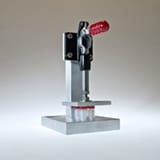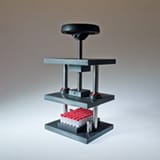Title
Automated Hydrolysis and Sample Preparation for the Analysis of 12 Opiates in Urine using the Thomson eXtreme Filter Vials® by LC-MS/MS
Description
This improved sample preparation method allows for the quantitative measurement of Opioids in urine. Opioids are highly addictive and affects nearly 5 million people in the U.S. Opioids include naturally occurring Opiates, semi-synthetic opioids derived from morphine and synthetic opioids. are analgesic alkaloids found naturally in Papaver somnife...
Products Used in Application

eXtreme|FV® - PVDF 0.2µm
Pre-Slit Septum, Red Snap Cap
pn#85531-200

eXtreme|FV® - PVDF 0.2µm
Pre-Slit Septum, Red Snap Cap
pn#85531-500
Related Products
Automated Hydrolysis and Sample Preparation for the Analysis of 12 Opiates in Urine using the Thomson eXtreme Filter Vials® by LC-MS/MS
Nadine Koenig1, Crystal Xander1, Melanie Stauffer1, Dean Fritch2
1 Health Network Laboratories, 794 Roble Road, Allentown, PA 18109
2 Analytical Associates, 225 Millwood Drive, East Greenville, PA
This improved sample preparation method allows for the quantitative measurement of Opioids in urine. Opioids are highly addictive and affects nearly 5 million people in the U.S. Opioids include naturally occurring Opiates, semi-synthetic opioids derived from morphine and synthetic opioids. are analgesic alkaloids found naturally in Papaver somniferum, poppy plant. The use of hydrolysis in the analysis of natural and synthetic opiates in urine has become standard practice in forensic toxicology. Many laboratories currently use solid phase extraction or solid liquid extraction techniques in the sample preparation of urine for the analysis for opiates. This improved automated sample preparation method evaluates the robustness for the quantitative measurement of opiates in urine without the need for SPE/SLE thereby reducing pipetting errors. The sample preparation of incurred urine, controls, standards and internal standard additions as well as the hydrolysis step are performed by a liquid handler. The Thomson eXtreme Filter Vials provide a simple and efficient extraction technique that has demonstrated adequate analyte recovery, reduced matrix interferences and the reduction of solvent and consumable waste.

